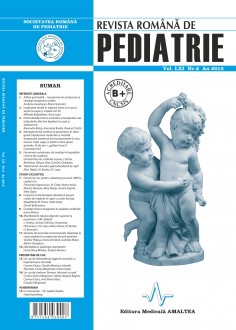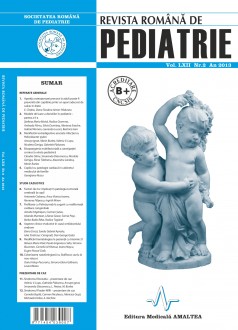SELECT ISSUE

Indexed

| |

|
|
|
| |
|
|
|

|
|
|
|
|
|
|
HIGHLIGHTS
National Awards “Science and Research”
NEW! RJP has announced the annually National Award for "Science and Research" for the best scientific articles published throughout the year in the official journal.
Read the Recommendations for the Conduct, Reporting, Editing, and Publication of Scholarly work in Medical Journals.
The published medical research literature is a global public good. Medical journal editors have a social responsibility to promote global health by publishing, whenever possible, research that furthers health worldwide.
A case of giant hydronephrosis associated with arterial hypertension
Carmen Duicu, Claudia Bănescu, Iolanda Muntean, Oana Marginean and Horea Gozar
ABSTRACT
Cases of giant hydronephroses are rare and usually contain no more than 1-2 liters of fluid in the collecting system. We report a case of giant hydronephrosis with secondary transitory arterial hypertension. An overweight 14-year-old boy was incidentally discovered with high blood pressure at a routine medical visit. Medical history was unremarkable. Abdominal ultrasound revealed a giant cystic tumor fi lling over then 50% of abdominal cavity. Although both clinical symptoms and physical exam were poor and arterial hypertension seemed obesityinduced, finally high blood pressure was secondary to the giant hydronephrosis. Therefore, any abdominal cystic mass even in the absence of other evident pathologies should include the differential diagnosis of a possible hydronephrosis.
Key words: giant hydronephrosis, hypertension, child

